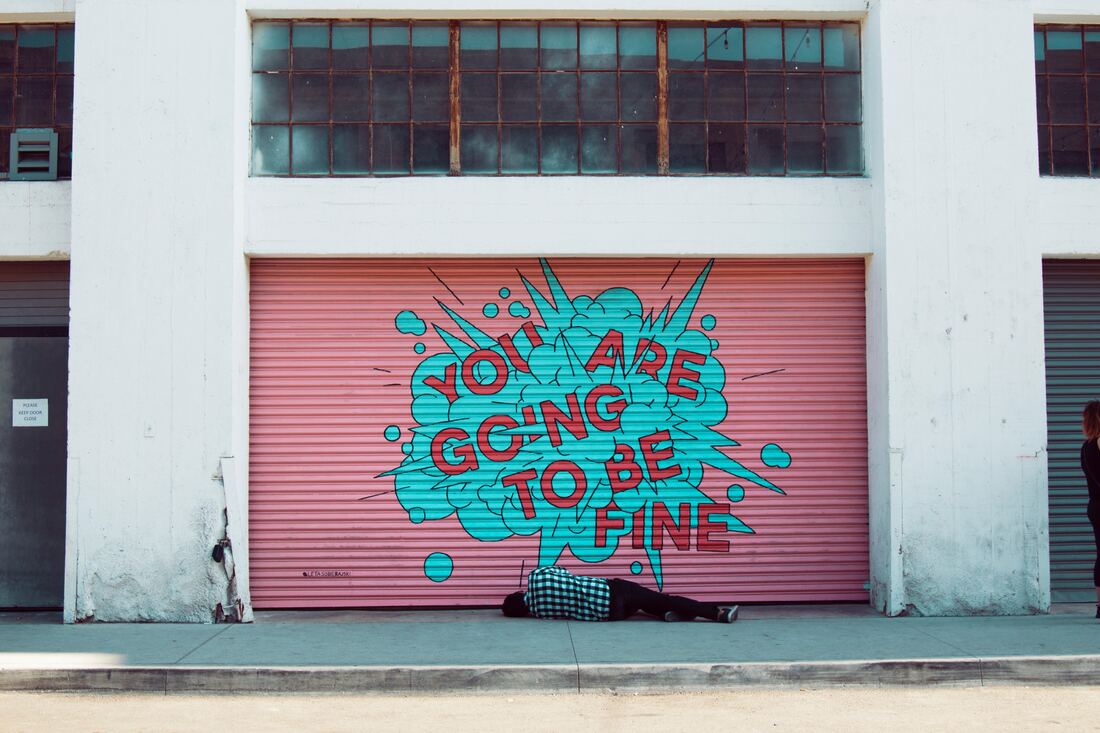|
We all have stuff we’re dealing with. As the cliché goes, if everyone had to put their problems under a tree and you could see them, you’d very quickly go and reclaim yours again. What I’ve learned though is that we cannot change what happens to us, but we sure as hell can change the way in which we respond. There have been days where I’m just like, “you know what, I actually can’t adult today” and the thought of pulling the covers over my head sounds far sexier then facing another day. However, by shifting your focus and realigning your experience of life, you CAN change your attitude. You CAN change your experience. And you CAN, indeed, find happiness within yourself… even if you feel like you have a mountain of crap on your shoulders in this very moment in time. I’m not professing to cure your state of disillusionment; I can’t promise to change your life. Only you can do that. Through my experience as a health professional and somewhat of a book fanatic, I’ve fleshed out some tried-and-tested techniques on how to shift your paradigm of thought. Here’s how. Exercise 1: The five why’s Whenever experiencing emotions, like feeling sad, bad, angry, guilty or simply apathetic, I want you to take that particular circumstance or event and ask yourself “Why” five times. Here’s an example of how to conduct this inner dialogue: “I feel really miserable in my current relationship, although I’m desperately in love with her” Why? “Because my girlfriend seems to manage me, my needs and my expectations, and it frustrates me” Why? “Well, I need to be able to call her and connect with her, but whenever I seem to cross the line and then become overbearing, she avoids me” Why? “I guess I have a strong need to connect… to feel wanted… to be needed” Why? “Sigh… my family have always treated me as the outcast. I’ve never felt that unconditional sense of love and acceptance” Why? “I suppose on some level… maybe I just feel inherently unlovable” Bingo! By asking the five why’s, you start to strip away at the surface level problem; as you start scraping away at what could be a fresh wound or a deep seated scar. Of course, you may need to get to the root cause with four or six or ten why’s. The trick with this exercise is to look inward, and not outward. Be careful of falling into the external locus of control trap and blaming outside factors, like “she’s a cold hearted bitch”. Look within. Look inside. You can repeat the exercise with the same circumstance and may end up travelling along a different pathway as you peel back the layers toward self-awareness. This not only teaches you a sense of mindfulness, but it can improve your emotional intelligence if you start to get real and authentic with your inner self. Engage in the activity, write down your thoughts and analyse your thinking processors. In the above example, I’d ask the person “Did you feel love from your mother or father? Why? Why not? Did you have siblings? What was your childhood like? What’s your happiest memory? What’s your saddest memory?” You get my drift. Overall, it’s a powerful experience. Exercise 2: Worst Case Scenario This is an especially impactful exercise to do if you are prone to feelings of nervousness and anxiety. Are you a worry-wort? Constantly panicking about things? Take a particular circumstance or event that’s bugging you, and then think of the WORST CASE SCENARIO. Let’s use my own personal example next. If you’re self-employed like me, it’s easy to feel constant gut-wrenching anxiety every month. There’s no set salary. There’s no sick leave. Just bills to pay, and the fear that you may or may not bring in enough money that month. I’ve told myself “right, what’s the worst case scenario here?” “Well, I could not make enough money and not pay my bills, and that would just be awful.” Right? Wrong! Ramp it up and then multiply the worst case scenario by a gazillion. The answer may then be, “I’ll not make enough money for months on end, I’ll have to close my business, sell my house and car, and end up a hobo on the street eating mouldy bread I find in the bins. And then I’d die a lonely death and the earth would get invaded by aliens”. There we go, that’s more like a worst case scenario. When you take the extreme and unpack it, you actually shake up your preconceptions and realise… hey, that’s not that probable. I mean, in my instance, I am a qualified professional. Sure the economy sucks at the moment, but if things really get tough, I’d be forced to find even a menial job but then at least I’d pay my bills. See? Not so scary and bad, is it? Imagining the worst case scenario actually gives you some healthy perspective and the big, scary challenges don’t seem so big and scary anymore. Go for it – try it yourself. Exercise 3: Third person perspective You know why talk therapy works so well? Because your therapist is usually mirroring back to you the insights and answers you have deep within yourself. They are gently coaxing you into a place of deeper awareness and enlightenment. Well… that’s my opinion at least. Whatever problem you are facing at this moment in time, close your eyes and imagine that you are sitting across the table from yourself. No one knows you the way you do. Your experiences, your personality, your passions or your fears. Tell yourself what you are struggling with, and then give yourself advice. If you need a helping hand, perhaps imagine yourself being ten or twenty years older. Or flip the experience and imagine talking to a younger you – who you were ten or twenty years ago. What insights would you share? What would you say to yourself? What solutions would you provide? Okaaay I’ve engaged in some internal dialogue… what now? In exercise one, you peeled away at the layers of pain, similar to the way in which you would peel the layers of an onion. Here’s a tip – the more painful or uncomfortable you feel doing it, the closer you’re getting to the deep root of the problem. Don’t deflect. Don’t be scared. Take that negative feedback loop, for example, “I’m unlovable” and come up with the complete opposite thought loop. In other words “I AM lovable”. You could have a field day and link this new thought loop to improved affirmations, such as “I’m funny, intelligent and everybody adores me”. Then plaster those affirmations where you can see them every day. Your phones screen saver; on a printed piece of paper stuck next to the toilet; plucked onto the screen of your desktop at work; set as a recurring email to yourself every morning. Repeat the affirmation every day and you’ll start to re-programme your old thought process. With exercise two, you grabbed anxiety by the balls and imagined the worst case scenario. And guess what?! You’re still here! You may be worrying about something that may, in all likelihood, never ever transpire. Or maybe it will. But Gawd damn you’ve wasted some precious energy over stressing about something that will (let’s be honest) in all likelihood not happen. So the next time you feel anxious over something, I want you to try something. Anxiety, as you know, brings about physiological manifestations. Your heart starts racing, your palms clamber up with sweat, your breath quickens, your stomach feels queasy… you get the drift. Now the next time you feel that way, I want you to REFRAME the word “ANXIOUS” with “EXCITED”. The experience of excitement brings about the EXACT same experiences. Think of it. When was the last time you sat on a terrifying rollercoaster? You experienced an elevated heart rate? Check. Sweaty hands? Check. Shortness of breath? Check. You get my drift. But it was a feeling of elation when you crossed the peak and dropped down the tracks and then enjoyed the subsequent thrilling ride. You felt EXCITEMENT. So the next time you need to deliver a big presentation, go for an interview, or meet with your boss, tell yourself “I am excited. I am excited. I am excited.” In exercise three, start to build a relationship with yourself. In Susan Anderson’s book “The Journey from Abandonment to Healing” she talks about imagining yourself when you were about seven or so years old (and coining yourself “Little”). Then, visualise yourself as you currently are (and calling this version of yourself “Big”). Engage in inner dialogue by allowing Little to have her rant, and then allowing Big to appease Little with words of kindness, love, compassion and empathy. With enough time and practice, you can start to be your own solid base, and your very own biggest fan. In closing…
Life isn’t easy. For anyone. We can choose to see the world as this big, scary, horrific place. We can assume the role of victim and just throw our hands up because “nothing goes my way; only bad things happen to me”. OR… you can take back your power. Change your negative thought processors, and reframe your thinking. Empowerment is a choice. And that choice is for YOU to make. - By Marzenna Almendro References: “The 5 Second Rule” by Mel Robbins “Mind Hacking: How to Change Your Mind for Good in 21 Days” by John Hargrave “The Journey from Abandonment to Healing” by Susan Anderson
0 Comments
Leave a Reply. |
AuthorA candid compilation of my areas of interest: Business, Psychology and Lifestyle. Archives
April 2021
Categories |









 RSS Feed
RSS Feed
